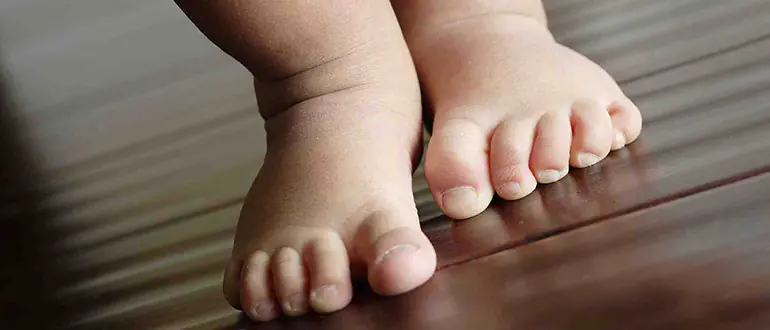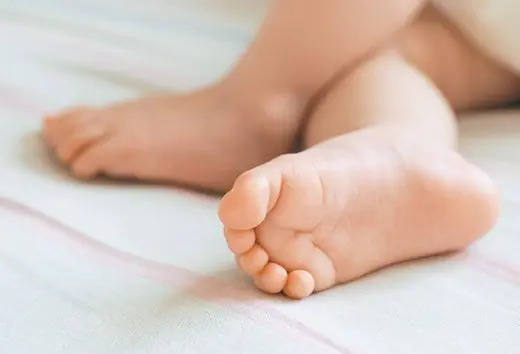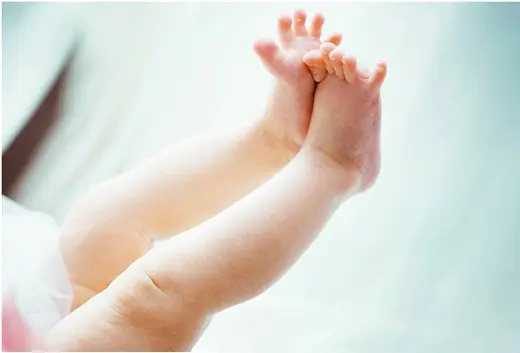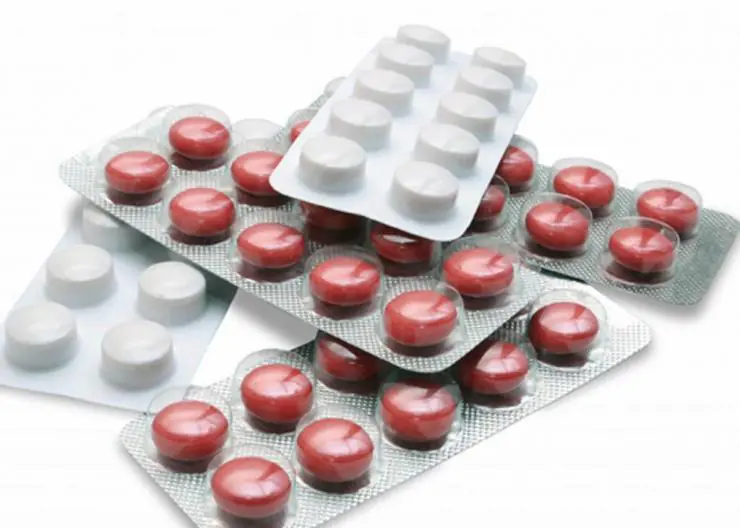The skin is a reliable protection of the human body, and one of the main organs. The appearance of rashes, dryness and diaper rash will be a signal of problems and even diseases. And parents should be very attentive to the condition of the baby’s skin and the appearance of alarming signs.
Dryness and flaking are a common reason for visiting a pediatrician. Does this always indicate pathology or are there other reasons?
Normal skin in a child
Normal children's skin is smooth, without cracks and signs of inflammation - swelling, redness. The appearance of cracks will also be an alarming symptom, especially in infants.
After birth, the child’s body resettles and gets used to new conditions. This fact may be associated with the appearance of rashes, diaper rash and even dryness.
Therefore, if a baby has dry skin on his legs, there is no need to sound the alarm. In most cases, this can be explained by physiological processes - restructuring of the body. But it still doesn’t hurt to consult a specialist.
Everything in the body is interconnected, and the appearance of any even subtle symptom will indicate a malfunction, especially in childhood, when all systems are still developing and learning to work correctly.
Dry skin of a child is formed as a result of insufficient moisture content in the stratum corneum (upper) layer. At the same time, its appearance changes, roughness, wrinkles appear, sometimes even scales appear, and its elasticity is lost.
Causes of dry skin on a child’s feet
Dryness develops in the first three years of a child’s life, and has several main reasons for its occurrence:
- poor nutrition. The diet is always displayed on the outside. A certain list of products will help increase its elasticity and softness, while others will have a negative impact on it. The child’s diet must include fish, vegetable oils, fresh vegetables and fruits, high in vitamin A, found in orange foods;
- lack of water. Drinking water will be the main source of moisture for the whole body. Children are recommended to drink at least 1.5 liters of water per day, this amount also includes the liquid contained in foods. In the summer, at least 2 liters are recommended;
- vitamin deficiency. The appearance of dry skin on the feet will be the main sign and signal of a lack of vitamins, and this deficiency has an acute course. Most often, vitamin deficiency develops in the spring, after long illnesses, when the body has spent a lot of energy fighting the disease;
- accompanying pathologies. These may be infectious diseases, for example, ARVI, some diseases of internal organs, metabolic diseases;
- inappropriate cosmetics. Provocateurs for the development of dryness may be low-quality cosmetics that are not intended for children. When choosing hygiene products, you need to pay attention to age-appropriateness, the presence of dyes and preservatives. Cosmetics must contain natural oils;
- visiting the pool, and the child’s contact with chlorine, will contribute to drying of the skin. Chlorinated water has its negative effect primarily on the skin of the feet;
- excess ultraviolet radiation. Protective creams should not be neglected, especially for children. In addition, in the summer, the child’s skin loses a lot of moisture, which will contribute to the formation of cracks. According to the data, it is during the hot season that such symptoms most often develop. Unfortunately, dryness can gradually become permanent and become much more difficult to eliminate;
- poor quality clothes. For children, all clothing should be made from natural, breathable fabrics;
- allergic reactions and predisposition;
- taking a hot bath; the optimal temperature for taking baths is considered to be water of 37 – 37.5 ºС.
What could be the consequences?
First of all, drying out the skin can result in the formation of cracks, which can be extremely painful. But all the consequences will be associated with the addition of a secondary infection. Cracks in the skin allow easy penetration of pathogens. For these reasons, the baby should wear open shoes, and if cracks have already formed, it is recommended to wear socks made of natural fabric.
The most correct treatment
In some cases, consultation with a specialist is not required; parents can cope on their own, but if a secondary infection occurs, it is impossible to do without treatment and the use of medications.
A comprehensive treatment and approach is required:
- The skin of the child's feet should receive sufficient nutrition and moisture. The choice of moisturizers requires a serious approach. For very dry skin, the choice of cream should be made together with a pediatrician. Additional vitamin A intake is also necessary;
- The child's room must be maintained at optimal temperature and humidity. Parents can additionally humidify the air using any available and convenient means, especially during the heating season, when the air is dry;
- There should be as little synthetic materials as possible in the child’s environment, this applies not only to clothes, but also to toys.
- hygiene products and washing powders must also be hypoallergenic and intended for children.
- proper nutrition and drinking regime.
Only after consultation with a specialist, traditional medicine - decoctions of medicinal herbs - can be used as moisturizers. Regardless of why dry skin appears, consulting a pediatrician will not hurt.
In the human body, the skin is one of the most important organs. It performs several functions at once: barrier, excretory, sensitive, thermoregulatory, storage and others. Therefore, parents should carefully monitor the condition of their baby’s skin from early childhood.
Normally, a child’s skin should be clean, smooth, without cracks or inflammation. If there are any changes on it (redness or roughness), parents should immediately pay attention to it. The child’s body signals that something has gone wrong.
If a child has dry skin, it means that the stratum corneum does not contain enough moisture. Its appearance changes - it becomes rough, wrinkled, sometimes even scaly, and loses elasticity. But that's not the worst thing. The danger lies in the fact that microcracks appear in dry skin, through which pathogenic bacteria easily penetrate into deeper layers and become the cause of the development of dermatological diseases.
Why does my baby have dry skin?
Dry skin in a child usually occurs in the first three years of life in the autumn-winter period or early spring. This phenomenon can be observed both on individual parts of the body (arms, legs, face) and on its entire surface. Children's skin is very sensitive to external factors, its protective function is just developing. Therefore, when dry spots or rashes appear on the body, it is important to determine which personal hygiene items can cause irritation to the epidermis, and exclude shampoos, soaps, gels, and washing powders to which the baby may be allergic. If your child has dry skin, you should choose only hypoallergenic hygiene and laundry products, preferably without a strong odor and bright color.
You should not bathe your baby in hot water, as it tends to dry the skin; the optimal temperature for this procedure is 37°C.
Sudden changes in temperature can also cause dry skin in a child. Severe frost and cold winds often cause irritation and redness on the face and hands. Therefore, before going outside, the baby needs to lubricate exposed areas of the body with a special cream.
Heating systems operating in winter dry out the air in apartments, so it is recommended to use special humidifiers during this period.
Dry skin in a child can be an allergic reaction of the body, so you should pay attention to food. Among them may be those that provoke allergies, in particular citrus fruits and chocolate.
Dry skin on a child's feet
Quite often, children have dry skin on their feet. Especially in the summer, it loses moisture to such an extent that it begins to crack and hurt. In this case, it is better to wear open shoes with maximum air access. To avoid dust and dirt getting into the cracks, you need to wear socks. Before going to bed, be sure to wash your baby’s feet with baby soap, wipe them dry and lubricate them with massaging movements with a special softening fortified cream.
Dry skin on a child's feet is highly susceptible to infections, which can lead to complications. The familiar heat rash, diaper dermatitis, and diaper rash spread quickly if not properly cared for, and a pustular rash can even form. To avoid complications, it is necessary to show the child to the doctor as soon as possible and begin treatment.
Treatment of dry skin in children
The epidermis in young children is not yet able to retain moisture in sufficient quantities, so it has to be replenished from the outside. The choice of moisturizer must be taken seriously, since the skin reacts sharply to external irritants. If the child has very dry skin, choose a product together with the pediatrician. Most often, in such cases, doctors recommend external preparations containing urea, in particular Excipial M lotion, as well as an additional course of vitamin A for a period of two months. It is better absorbed if you drop it on a small piece of black bread before eating. In some cases, if the baby’s skin is inflamed, vitamin E, calcium supplements, and fish oil are prescribed. The dose of medication is determined by the doctor.
It is better to bathe your child without foaming detergents at all. Herbal baths are very effective in such cases. You need to mix rose petals and chamomile flowers in equal proportions, pour boiling water over it and let it brew for 15-20 minutes. After this, strain and add to water. The procedure should last at least 10 minutes. A bath with flax oil is also effective (1 tablespoon will be enough).
After bathing, you can give your baby a massage, treating the skin with a cream containing vitamin A.
Dry skin of a child as a sign of the onset of the disease
Sometimes dry skin can indicate the onset of a disease. Therefore, if redness or irritation occurs, parents need to consult a doctor to make an accurate diagnosis, establish the cause and begin treatment. Dry skin in a child, mainly under the age of 1 year, often occurs with atopic dermatitis. Severely itchy, reddened areas are localized on the face, without affecting the nasolabial triangle.
Peeling and scaly formations on the elbows, knees, and cheeks may be signs of ichthyosis, a genetic disease in which the process of keratinization of cells in the body is disrupted.
If a child’s skin is very dry and peeling, most likely it is hypovitaminosis A and PP; treatment in the form of taking the necessary vitamins eliminates unpleasant symptoms.
It should be taken into account that dry skin can be caused by dehydration due to dyspeptic disorders (vomiting, diarrhea) and excessive sweating.
Dry spots on baby's skin
Dry spots on children's bodies often appear, and there is nothing unusual or scary about this, because she is very sensitive. But parents should be concerned if they do not go away for a long time. Firstly, the cause of such spots may be physiological, since in young children the fat glands are not yet fully functioning. Secondly, the condition of the skin is influenced by environmental factors (temperature and water hardness, air humidity, food, soap). At first, to soften the affected areas, you can use a product purchased at the pharmacy, for example, Panthenol. But if dry spots on the child’s skin do not disappear, you should consult a doctor, as they can be symptoms of serious diseases such as atopic dermatitis, eczema, and psoriasis.
Skin ailments are usually difficult to deal with, but a correct diagnosis made in time makes the task easier. If there are signs of a particular skin disease at an early age, it is very important to immediately take action and prevent its progression. Without proper treatment in a medical facility, it can become chronic.
Video from YouTube on the topic of the article:

Dry skin on a child’s legs is a common problem caused by both improper care of the baby and a number of diseases that require competent professional treatment. If a child’s skin is peeling and dry, the triggering factors should be identified and the necessary measures taken to solve this problem.
Causes of dry and rough skin
The skin of a baby is distinguished by tenderness, thinness and increased sensitivity. Pediatricians identify the following causes of skin problems in children under three years of age:
- Incorrect, unbalanced diet. A lack of vitamins and microelements in a child’s body affects the condition of his skin, making it pale, dry, rough and flaky.
- Violation of the drinking regime. If a baby drinks less than 1.5 liters of water during the day, this leads to dehydration and dry skin.
- Unsuitable cosmetics (baby cream, soap and other hygiene products). It is important to select high-quality cosmetics that include only natural ingredients and are appropriate for the child’s age.
- Allergic reactions.
- Hormonal disorders.

In some situations, dry skin becomes due to frequent bathing, dry indoor air and other external factors.
However, sometimes a similar phenomenon in children can act as one of the symptoms of diseases that require competent and timely treatment:
- Atopic dermatitis is a hereditary allergic disease. With this pathology, the child’s skin (not only on the legs, but also on the face and other parts of the body) becomes dense, rough, and covered with crusts.
- Eczema - accompanied by dryness, itching and burning sensation in the affected areas.
- Dermatitis - with this disease, individual dry spots appear on the child’s skin, having a predominantly round shape.
- Renal pathologies - manifested by disturbances in the process of urination, painful sensations localized in the lumbar region, permanent lack of appetite, and general weakness. The skin becomes not only dry, but also acquires a painful yellowish tint.
- Ichthyosis - with this disease, the skin becomes covered with blisters and specific scales.
- Hypothyroidism is a disease caused by disturbances in the functioning of the thyroid gland, accompanied by swelling, dry hair and skin, brittle nail plates, general weakness and increased fatigue.
If a child has such symptoms, especially if they persist for a long time, despite proper care for the baby, it is important to seek help from a doctor as soon as possible.
Dry skin in a newborn
The problem is often associated with the physiological characteristics of the structure of the outer covering of infants. The fact is that the baby has difficulties with heat transfer, which is associated with insufficient development of the sweat glands.
The epidermis of an infant contains an increased amount of lipids, which, on the one hand, protect his skin from external influences, but on the other, can lead to dryness and irritation.

The following factors can provoke the appearance of dry and rough skin in a newborn:
- general overheating of the body;
- prolonged exposure to the sun;
- the use of air conditioners and heaters that dry out the air in the room;
- violation of hygiene standards.
To avoid troubles such as dry skin, you need to properly care for your child and humidify the air during the heating season, using special devices for this purpose or placing containers of water around the apartment.
Why does an allergy affect the skin?
In most cases, a child’s rough skin, prone to dryness, is a sign of allergic manifestations. Why is this happening? The fact is that allergies, in essence, are the body’s defense against foreign proteins.
Specific allergen substances can also provoke its manifestation. In a small child, the immune and enzymatic systems are not yet sufficiently developed, so even many food products are perceived by the body as provoking allergens. Foreign substances are removed from the child’s body through the skin and urinary system, which is why they suffer the most.
Most often, children are susceptible to a disease such as atopic dermatitis. In newborn babies, with proper therapy, it is possible to quickly eliminate the symptoms of the pathology and stop the further development of the disease.
In children over the age of one year, the disease is severe, often accompanied by the appearance of ulcers and damage to the deep layers of the skin. Treatment is difficult, and often the disease becomes chronic. However, the lack of therapeutic measures is fraught with the development of dangerous consequences: rhinitis, bronchial asthma, eczema, etc.
Which doctor should I contact?

If your child has dry and rough skin on his legs, and even more so if there are other alarming symptoms, you should see a pediatrician.
The doctor will conduct an examination, study the clinical picture, analyze the collected medical history, and write out directions for tests. If necessary, the local pediatrician will refer you to such highly specialized specialists as a pediatric dermatologist, allergist, and endocrinologist.
Treatment
Therapy for dry skin of the feet in a child is prescribed individually, depending on the root causes that provoked this phenomenon and the age category of the little patient.
If dry skin is a symptom of a certain diagnosed pathology, then first of all it is necessary to treat the underlying disease. The course of health measures is developed by the doctor depending on the diagnosis, the age of the child, the stage and degree of the pathological process, and other features of a particular clinical case.
If the problem is caused by allergic reactions, poor nutrition or skin care for the baby, then it is enough to adjust your lifestyle to achieve positive results.
Medicines
Medications are prescribed for diseases such as dermatitis, diabetes, hypothyroidism, renal and endocrine pathologies. Systemic medications are selected by a doctor according to an individual scheme. If dry, rough spots appear on the baby’s skin, the use of external medications (Fenistil ointment, etc.) may be recommended.
In the case of atopic dermatitis or severe allergic manifestations, the child is prescribed ointments and creams that contain hormones - glucocorticosteroids. Such drugs provide a good therapeutic effect, but they should be used only as prescribed by a doctor, strictly observing the dosage.

Hormonal drugs are discontinued gradually, reducing the amount of the drug over several days. In particularly complex, advanced cases, the use of antihistamines, calcium, and glucocorticosteroids may be recommended.
Diet
Diet therapy is the main method of treating and preventing dry skin in children. If the baby is breastfed, then the mother should exclude from the menu all foods that cause allergies.
If the problem arose after the introduction of complementary foods, it is recommended to restore the child’s usual diet for two weeks, and then reintroduce complementary foods.
Any product is included in the menu in a minimum quantity for three weeks. Such a scheme helps doctors identify the presence of a certain food allergen in a child that negatively affects the skin.
The basis of the baby’s diet should be the following foods:
- cucumbers, tomatoes;
- melon, pumpkin;
- spinach, carrots, cabbage;
- dairy and fermented milk products;
- eggs;
- porridge.
It is recommended to temporarily exclude sweets, fried foods, and citrus fruits from the menu of a small patient.
Folk remedies

Traditional medicine helps a child with dry skin. The simplest and most effective recipes are:
- Foot baths. Dissolve a tablespoon of vegetable oil in a bowl of warm water. The optimal duration of the procedure is about 10 minutes. Excellent results are obtained by foot baths with decoctions, infusions of rose petals, sage, and chamomile.
- Cucumber infusion – has moisturizing, regenerating, refreshing properties. To prepare the medicine, you need to finely chop several fresh cucumbers, immerse them in a liter jar and fill them with alcohol or vodka. Place to infuse in a dark, cool place for two weeks. After the specified period, cucumber tincture can be used to treat the baby’s feet 1-2 times a day.
- Lemon compress - softens the skin, gives it softness and elasticity. To make such a remedy, just apply a little lemon juice to a gauze cloth and apply it to the affected area of the child’s skin, securing it with a plaster or bandage. Recommended exposure time is 10 minutes.
In case of serious illnesses, folk recipes can only be used as an addition to the main treatment after consultation with a doctor, especially if we are talking about very young children.
Consequences
If timely measures are not taken, dry skin on a child’s feet can lead to the following complications:
- the appearance of painful cracks;
- ulcerative, erosive lesions of the skin;
- eczema;
- chronic form of atopic dermatitis.
If the cause of dry and rough skin lies in the last of the listed points, then the development of chronic allergic reactions, bronchial asthma, and neuropsychiatric disorders is possible.
Prevention

It is easier to prevent any problem than to treat it. To avoid dry and rough skin on a child’s feet, doctors advise parents to pay attention to the following preventive recommendations:
- Take care of the child’s proper, balanced nutrition, provide his body with the necessary amount of vitamins A, B and E.
- Give your child as much fluid as possible, especially during hot periods, giving preference to clean water, milk, natural juices, and fruit drinks.
- Use natural children's cosmetics and avoid regular soap.
- Choose high-quality shoes made of genuine leather for your child that match his size.
- Avoid using socks, tights, and rompers made from synthetic materials.
Dry skin on a child’s feet is not the most serious problem, but this symptom causes the baby some discomfort and may also indicate the development of serious allergic diseases. Therefore, you should not ignore such a manifestation. Provide your baby with proper care, and if this does not help, first consult a pediatrician.



